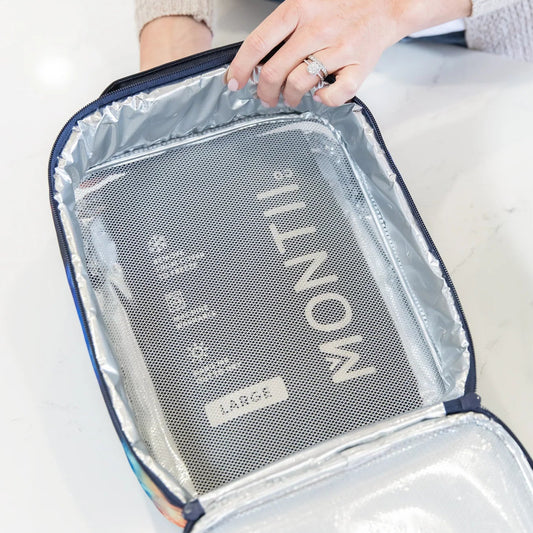No more throwing out spoiled produce and your hard earned cash along with it! Rediscover the clever ways our grandparents reduced food waste.
Our grandparents were savvy at making things last, from mending clothes to conserving food. Among their clever tricks was wrapping fresh produce in wet tea towels to keep it crisp and fresh for longer. This method worked because the damp cloth maintained moisture around the vegetables, slowing down dehydration.
Today, we have a modern equivalent—the Veggie Saver Bag. Inspired by this time-tested practice, this convenient bag uses the same principle to keep your vegetables, herbs, and greens fresher in your fridge. The bag creates the perfect environment, allowing produce to breathe while retaining moisture.
But, that wasn't the only trick up their sleeves. Here are some more ways our grandparents avoided food waste:
1. Canning and preserving
When produce was in season or in abundance, our grandparents would can fruits, vegetables, and even meats. This process allowed them to enjoy seasonal foods all year round while preventing spoilage.
Find Biome's jam and preserve making supplies here.
2. Using the whole vegetable
Nothing went to waste in our grandparents' kitchens. Vegetable scraps like carrot tops, onion skins, and celery leaves were often saved to make nutritious stocks and broths. Even potato peels found their way into delicious dishes.
Crispy Potato Peel Chips Recipe
Ingredients:
- Potato peels (from organically grown potatoes, cleaned and patted dry)
- Olive oil
- Tasman Sea Salt
- Your favourite seasoning (paprika, garlic powder, etc.)
Instructions:
- Preheat your oven to 200°C.
- Toss the dry organic potato peels in a bowl with olive oil, salt, and any other seasoning.
- Spread the peels in a single layer on a baking sheet.
- Bake for 10-15 minutes, until crispy and golden brown.
- Let them cool slightly and enjoy as a snack or garnish!
These crispy potato peel chips are a delicious and sustainable snack, perfect for reducing waste!
3. Root cellaring
Before refrigerators became common, root vegetables like potatoes, pumpkin, carrots, and turnips were stored in cool, dark cellars where they could stay fresh for months.
The Veggie Saver bag also works very well for extending the life root vegetables by providing a dark and cool wrapping. Simply put the vegetables inside a dry Veggie Saver Bag and leave them in your cupboard for weeks.
4. Making bread last
Stale bread was never thrown away. It was transformed into breadcrumbs, croutons, or bread pudding, ensuring that every last crumb was used.
Find Bread making and waste saving ideas here
5. Fermenting and pickling
Fermentation and pickling were popular methods to preserve the harvest. Not only did this extend the life of vegetables, but it also added flavour and nutrition.
Find tools to help with fermenting here
Today, we can honour these mindful traditions by incorporating similar practices into our lives. The Veggie Saver Bag, for instance, is a modern take on the wet towel method, designed to keep your vegetables, herbs, and greens fresher for longer.
By using this simple tool, you can reduce food waste, save money, and connect with the wisdom of the past.







































